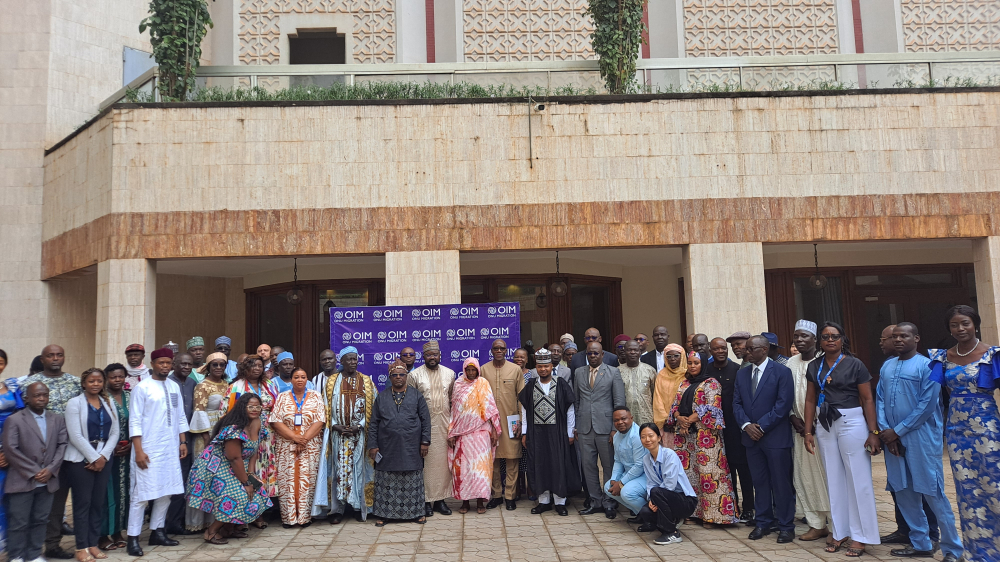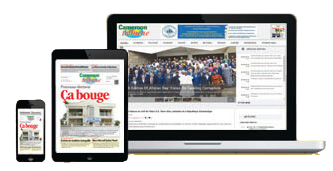Nexus Development Approach : Logone Birni’s Newfound Peace, Stability
- Par Kimeng Hilton
- 21 juil. 2025 23:24
- 0 Likes

The International Organisation for Migration, the Cameroon government and stakeholders are meeting in Yaounde in a three-day workshop. To evaluate the “Support for Peaceful Coexistence between the Communities of Logone Birni in the Far North Region.
In August and December 2021, intercommunal violence erupted in Logone Birni Subdivision of Logone and Chari Division in the Far North Region. The violence followed a dispute between herders and fishermen in Ouloumsa over a cattle trail. The area is located approximately 3km from Logone Birni, the subdivisional headquarters. The conflict later spread to the rest of the division as well as to certain localities in Mayo Danay Division of the Far North Region.
Telltale Destruction
The recorded death toll was at least 44, more than 100 injured, houses, granaries and various socio-economic infrastructure destroyed and looted in 112 villages. The violence also led to the internal displacement of more than 37,000 people, according to the Rapid Response Mechanism, RRM. And more than 43,500 people fled to Chad, according to the United Nations High Commission for Refugees, UNHCR. In June 2022, despite a general lull, incidents with a community connotation continued in certain localities.
Reason For Project
Thus, the “Support for Peaceful Coexistence between the Communities of Logone Birni in the Far North” project was implemented from 2022-2024. It was jointly implemented with the Cameroon government by four United Nations agencies – the International Organisation for Migration or UN Migration, IOM; the United Nations High Commission for Refugees, UNHCR; the Food and Agricultural Organisation, FAO and the United Nations Development Programme, UNDP.
Evaluation Workshop
UN Migration and partners on July 21, 2025 in the Cameroonian capital, Yaounde began meeting in a three-day workshop. To evaluate the project by looking at the success stories/best practices or lessons learnt.
Leveraging Lessons Learnt
“We are trying to leverage the lessons learnt from the project. The project had communities at the core of decision-making so that their needs were taken care of appropriately. The project also built on partnership by involving the civil society, and mobilizing four United Nations agencies to work together. Above all, there was a strong partnership with the government,” explained the Resident Coordinator of the United Nations System in Cameroon, Issa Sanogo.
Nexus Development Approach
“All the partners were mobilized around the Nexus development approach which comprises humanitarian assistance, development and peace-building initiatives. We were able to go beyond humanitarian assistance to offer development for economic resilience, while building peace. Today, communities in Logone Birni Subdivision have moved away from conflict and have embraced peace. This means when we come together, we can build peace, development and attain transformation,” Issa Sanogo noted.
Joint Efforts Of UN Agencies
According to the International Organisation for Migration Chief of Mission to Cameroon, Abdel Rahmane Diop, the workshop is more than presenting the balance sheet of the Logone Birni project. It is about the joint efforts of the International Organisation for Migration, the United Nations High Commission for Refugees, the Food and Agricultural Organisation, and the United Nations Development Programme.
Were It Not For Cameroon…
Diop expressed gratitude to the Cameroon government and the Governor of the Far North Region for their collaboration. He said the project promoted peaceful co-existence and sustainable peace amongst hitherto belligerent tribes. The project set up 10 community peace committees, 10 conflict early warning committees as well as promoted peace on a local radio. A special branch police station was refurbished and 10 community projects carried out. With over 400 homes receiving income-generating kits, Diop disclosed.
Stabilisation, Community Recovery
Women and youth were involved in project decision-making. “Today we are proud to say that other regions of Cameroon can emulate the example of Logone Birni project to foster stabilization and community recovery,” Abdel Rahmane noted. Logone Birni project sought to support peaceful co-existence initiatives between Choua Arabs and Mousgoum people. It was also meant to prevent further communal clashes between the two peoples, which began in 2021 and left scores killed and injured.
Scarce Resources
The causes of the crisis were over access to resources – water, pasture, disputes over traditional chieftaincy positions, and the scarcity of resources as the population grows. The project objective was to strengthen peaceful co-existence. It was sponsored at the cost of 4 million US dollars from 2022-2024 by the Peace Building Fund, PBF. Project beneficiaries were displaced people, returning people, and host community people. Some 35,000 people directly benefitted from the project.
Project Gains
Project results include the creation of transhumance routes and the setting up of a customary court. Meanwhile, the project is aligned with Cameroon’s development goals and strategies, as well as international development initiatives by government and partners. The project was implemented by four UN agencies and 8 local civil society organisations. During three days, workshop participants will discuss project success stories or best practices in order to see the possibility of replicating the project elsewhere.
Violent Communal Clashes
Logone Birni project responded to violent inter-communal clashes, and ran from 2022-2024. Over 1,200 homes were supported. “There was conflict, but today, there is peace, no more acrimony between Choua Arabs and Mousgoums,” said Younous Fanne, a Choua Arab old woman in a documentary produced by IOM and projected during the workshop. She lost five members of her family in the conflict.
Local Involvement
The project shows the commitment of Cameroon to stabilizing the country and bringing about peace. One lesson learnt is the involvement of local people and the collaboration of UN agencies.
Next Project Direction
The Peace Building Fund, PBF has sponsored projects worth more than 30 million US dollars over the past years. Cameroon is part of the seven priority countries in Nexus development, peace and humanitarian assistance. Stakeholders at the workshop say Logone Birni project results are evident. Though the challenge remains to engage the commitment of stakeholders by building on the results. Thus, strengthening traditi...
Cet article complet est réservé aux abonnés
Déjà abonné ? Identifiez-vous >
Accédez en illimité à Cameroon Tribune Digital à partir de 26250 FCFA
Je M'abonne1 minute suffit pour vous abonner à Cameroon Tribune Digital !
- Votre numéro spécial cameroon-tribune en version numérique
- Des encarts
- Des appels d'offres exclusives
- D'avant-première (accès 24h avant la publication)
- Des éditions consultables sur tous supports (smartphone, tablettes, PC)














Commentaires